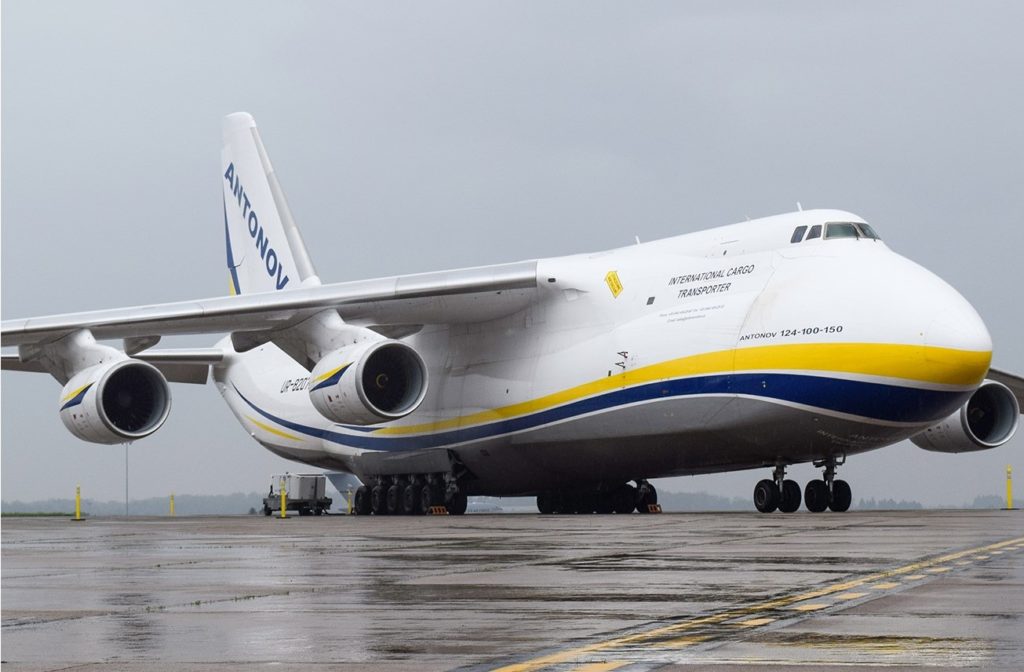Flight Tracking Sites Serve as Eyes in the Sky
Apps use data from many sources to provide real-time flight information for public
By Evan Dougherty
Published February 13, 2020
Read Time: 4 mins
No planes fly under the radar.
When a special aircraft, like the massive, Russian-built Antonov An-124 Ruslan or the Airbus A380, the largest commercial passenger plane in the air, lands at Pittsburgh International, it draws the attention of aviation enthusiasts around the region.
But how do these planespotters, affectionately known as “avgeeks,” know when a special plane is inbound for PIT?
It’s easy: They’ve got the apps. Flight tracking apps provide advanced notice of incoming flights, allowing enthusiasts to come to the airport and catch even the rarest of airplanes, said Ryan McManus, a local planespotter at PIT.
“At first, I couldn’t believe it came here,” McManus said of the Antonov An-124, which can carry up to 150 tons of cargo loaded through the distinctive open bay in its nose. “The size of the Antonov is tremendous, especially when seeing one in person. Getting to stand next to it taking photos is something I will never forget.”

An Antonov An-124 aircraft traveling from Shannon, Ireland landed at Pittsburgh International Airport in April 2019. (Photo by Evan Dougherty)
Apps like Flightradar24 and FlightAware provide information on flights taking place across the world, including data on flight paths of rare and unusual planes like the Antonov. Having flight information collected in one place has made flight trackers popular for avgeeks and the general public.
How it works
Worldwide, up to 20,000 flights can be in the air at once. Each flight has its own set of data, including information on the plane’s location and its route.
Flights are monitored by satellites in space, which report positioning and speed of an airplane. A complex system of transponders, known as Automatic Dependent Surveillance Broadcast, or ADS-B, sends out signals to receivers, which relay information acquired from a flight.
A growing number of aircraft have been modified with onboard ADS-B transmitters, which relay flight information to ground-based receivers equipped with antennas. Once acquired, the data collected by the receiver is then transferred to a flight tracking site’s server and displayed online.
Thousands of these receivers are located all over the globe and are vital in tracking flights, said Ian Petchelik, director of communications at Flightradar24.
“The receivers collect radio signals transmitted from aircraft and that data gets fused with schedule information received from various providers,” Petchelik said. “Once we match that unique identifier from a particular flight, we’re able to provide [users] a lot more information about an aircraft operating a flight.”

Flight tracking apps provide useful information for travelers and planespotters alike. (Photo by Beth Hollerich)
Flightradar24 collects and translates flight data from more than 25,000 ADS-B receivers. These receivers are either supplied by the app to premium users or are homemade and linked via software to Flightradar24’s network.
Monitoring one flight, let alone thousands at once, and organizing all that data can be challenging, added Petchelik.
“That’s the eternal struggle we’re always facing – the amount of data coming in and how we best organize that to provide our users with a coherent experience,” he said.
In addition to ADS-B, flight trackers rely on dozens of other sources to keep track of flights, such as the Federal Aviation Administration and NavCanada, said Mark Duell, vice president of operations at FlightAware.
Tracking a plane
Using one of the apps, users can customize the data to find information in which they’re interested, like a specific route, airline or aircraft type.
McManus is one of many local planespotters who use tracking apps to know when an interesting plane is landing at PIT.
“It’s such an important part of planespotting, especially at an airport like PIT where the locations for spotting arrivals on each runway aren’t very close together,” McManus said.
FlightAware also offers information on inbound and outbound flights that can be customized to a particular airport, which can be particularly helpful for spotters. From there, users can see arriving and departing flights and schedules, including flight numbers and aircraft types.
Other sites, such as OpenADSB and Radarbox24, display real-time tracks of commercial and select military aircraft, including Air Force One. Additionally, Jettip provides alerts for special liveries or aircraft types uncommon at specific airports.
Not just for avgeeks
Using FlightRadar24, travelers can find information on a flight’s status and its estimated time of arrival. A drop-down feature also shows the gate where the aircraft will arrive, as well as its baggage claim assignment.
Passengers waiting to board a flight can use the apps to see where their aircraft is coming from and which routes it has flown over the past few days.
“I like to use the apps when I’m traveling commercially to track myself when the moving map feature isn’t available onboard,” McManus added. “I also like to see if the plane assigned to operate my flight is in some kind of special livery.”
Additionally, the apps show a plane’s flight path, which often indicates if the aircraft flew over landmarks or other notable areas.
Advancements in technology have helped flight tracking systems become more user-friendly. A few years ago, “it was just hand-me-down tools created with the airlines and business aviation in mind,” Duell said. “With better coverage and technology, we’re able to give users better access to information they didn’t have viable access to previously.”
Watch
This Next
Read
This Next





